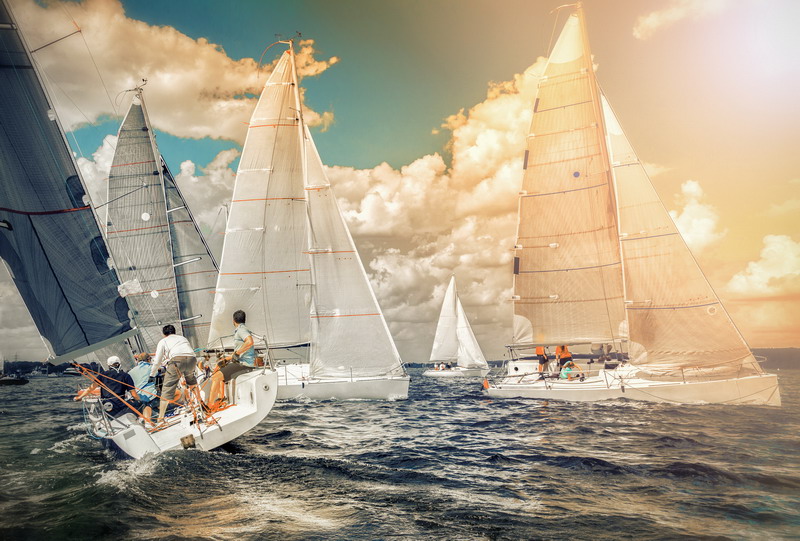You wouldn’t expect a young student just learning how to sail to know anything about the tides. You might not even expect new sailors still working on their third and fourth sailing lessons to know a whole lot about the subject. But by the time a sailor has logged enough hours to have earned a captain or skippers rank, you just expect that person is knowledgeable about tides.
According to a NauticEd, a training organization that offers both online sailing courses and on-the-water training, some sailors wing it when it comes to tides. Doing so is not wise. No matter how much knowledge a sailor has, the sea can be unforgiving. It is also not necessary either, given the amount of technology we have at our fingertips.
What Causes the Tides
Most of us have heard of high and low tides. People who live near the water note that at certain times of the day the water is higher. It then recedes again later in the day. But not many people understand what causes the tides. It all boils down to the laws of physics.
Both the sun and moon exert a measurable gravitational pull on the earth. The amount of gravitational pull increases with mass; it decreases inversely with distance. With that in mind, you might expect the sun’s gravitational pull is greater. It’s not. Why? Because the distance is too great. The amount of gravitational pull generated by the sun is less than half that which is generated by the moon.
The earth spins on a 24 hour clock, the Earth and moon rotate around the sun on an annual clock, and the moon rotates around the Earth on a 28 day clock. Thus the gravitational pull exerted by the moon and sun changes direction in a fairly complex nature – yet it is extremely predictable because this has been happening the same way for millions of years. Tides have thus become a predicable harmonic. The gravitational pull from the moon is strongest compared to the sun because of its proximity to the Earth. Gravity from these celestial bodies act on everything on Earth including the dirt and rocks. Yet it is the water on Earth that is the most noticeable to change in shape.
As the gravity from the moon squeezes the earth, high tides are created which in most places closely follow ½ the harmonic spin rate of the Earth relative to the moon; a lunar day which is about 12.5 hours. When the sun and moon are aligned, either on the same side or opposite sides of the Earth, the gravitational squeeze is the greatest. These high tides are known as spring tides, which occur about every 2 weeks.
The Danger of Tidal Currents
As for why sailors should not wing it when it comes to the tides, it is all about tidal currents. Locations that experience the highest and lowest tides tend to also have the strongest tidal currents. Moreover, tidal currents have to be respected by sailors.
If you were sailing in the Mediterranean for example, tides in that part of the world are not very drastic or even noticeable for that matter. In fact, you can skipper a boat in the Mediterranean without being certified in tides. But take that same boat into the English Channel and you will soon discover that tides can wreak havoc. The English Channel has some of the strongest tidal currents in the world thanks to strong tides enhanced by a lot of water being forced through a very shallow and narrow channel.
Tidal currents can easily carry a vessel off course. They can run a vessel aground during periods of low tide. When it comes to racing, tidal currents can make successfully navigating a course more challenging than it’s ever been. Next to winds, tidal currents are one of the most influential factors in sailing.
NauticEd says it’s a bad idea to wing it when it comes to tides. Any sailor who has never received training should avoid sailing waters where tidal currents are the most treacherous. Those who have been trained should rely on that training for safe sailing. Winging it is a recipe for disaster.
























